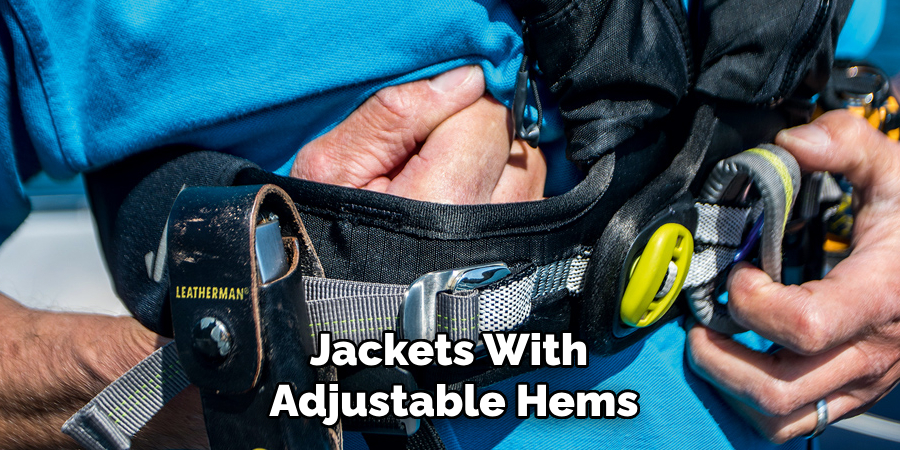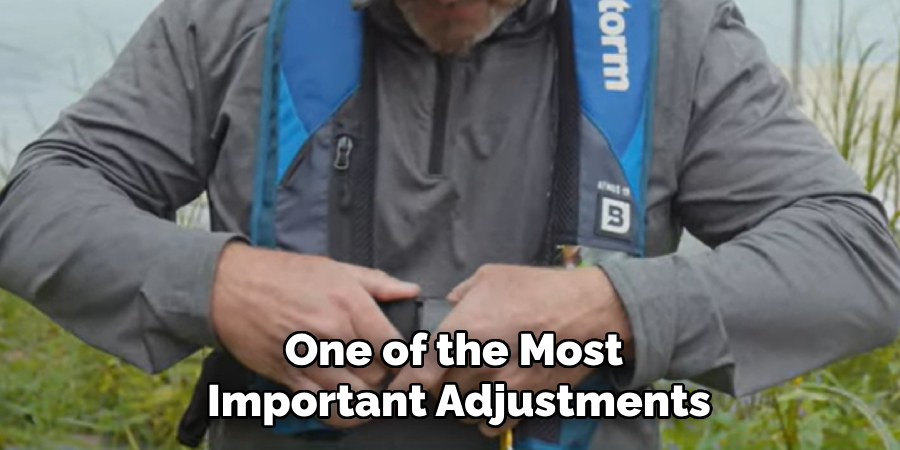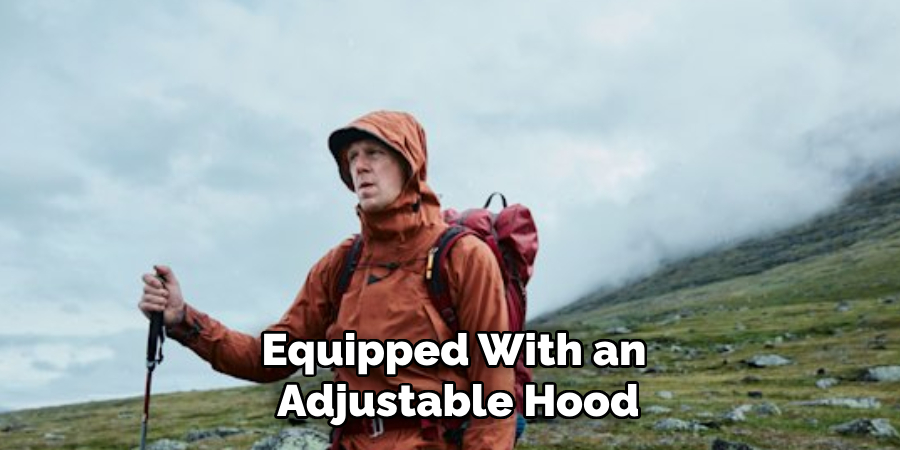Wearing a properly fitted safety jacket is crucial for ensuring both comfort and protection in hazardous environments. An ill-fitted jacket can compromise safety and restrict movement, making it essential to adjust the fit correctly. This guide will provide step-by-step instructions on how to adjust the fit of a safety jacket, ensuring maximum effectiveness and durability.

Importance of Achieving a Proper Fit
Achieving a proper fit for your safety jacket is critical to its functionality and your overall safety. A well-fitted jacket ensures that protective features, such as reflective strips and padding, are positioned correctly to provide maximum visibility and impact resistance. Additionally, a proper fit minimizes the risk of the jacket catching or snagging on equipment, which can lead to accidents in hazardous environments. Comfort is another key factor—a jacket that fits appropriately allows for ease of movement, enabling you to perform your tasks efficiently without unnecessary discomfort or distraction. Ultimately, a properly fitted safety jacket is essential for maintaining safety standards and ensuring that you remain protected throughout your work.
Why the Right Fit is Crucial for a Safety Jacket
The right fit for a safety jacket is crucial because it directly impacts the wearer’s safety, comfort, and productivity. A jacket that is too loose may cause safety hazards, such as getting caught in machinery or obstructing movement during critical tasks. Conversely, a jacket that is too tight can restrict mobility and limit flexibility, making it difficult to perform tasks effectively and increasing the risk of fatigue or injury over time. Properly fitted jackets ensure that the protective elements, like reflective materials and padded reinforcements, remain in their intended positions, offering optimal coverage and functionality. By prioritizing the right fit, workers can focus on their tasks with confidence, knowing that their safety equipment will perform as intended in demanding environments.
10 Methods How to Adjust the Fit of a Safety Jacket
1. Adjust the Collar for Comfort and Protection

The collar of a safety jacket plays a key role in both comfort and protection. An adjustable collar can help you keep the jacket securely in place around your neck, ensuring that it doesn’t ride up or cause discomfort. Some jackets feature collars with Velcro or snap closures that allow you to modify the fit based on your comfort level. Tightening the collar can provide additional warmth and protection against wind and rain, while loosening it can help improve ventilation, especially during physical activity. For added comfort, choose a jacket with a soft, padded collar that won’t irritate your neck when adjusted.
2. Utilize Adjustable Cuffs for Better Fit
The cuffs of a safety jacket can significantly impact how well the jacket fits your arms and wrists. Adjustable cuffs allow you to customize the fit around your arms to ensure that the jacket remains snug but not restrictive. Many safety jackets have cuffs that can be tightened using Velcro, buttons, or elastic, which helps to prevent cold air, rain, or dirt from entering the sleeves. For a more relaxed fit, loosen the cuffs to allow for better airflow and comfort during warmer weather. Conversely, tightening the cuffs can offer additional protection in colder or wet conditions by helping to keep the jacket sealed around your wrists.
3. Adjust the Waistband for a Secure Fit
A safety jacket with an adjustable waistband is especially beneficial for ensuring that the jacket fits comfortably without becoming too loose or bulky. Most safety jackets have drawstrings, toggles, or elastic bands at the waist that allow you to cinch the jacket for a more tailored fit. Tightening the waistband can help the jacket stay in place, preventing it from riding up during movement, which could expose your body to the elements. Additionally, adjusting the waist ensures that the jacket doesn’t feel too baggy, which could hinder your mobility or make you feel overheated in warmer conditions.
4. Modify the Zipper for Ventilation and Fit

Many safety jackets come with zippers that allow for adjustments in the fit, especially in the front or side areas. Unzipping the jacket slightly can help increase airflow and reduce heat buildup, which is especially useful in hot weather or during strenuous activities. Alternatively, zipping up the jacket fully will keep the fit more secure and provide better protection against the wind and rain. Some jackets have two-way zippers, which allow you to adjust the jacket’s fit from both the top and bottom, offering better flexibility when sitting, bending, or walking. This level of customization can make your jacket more comfortable in varying environments.
5. Choose a Jacket with Adjustable Hems
The hem of a safety jacket is another area where an adjustable fit can make a noticeable difference. Jackets with adjustable hems, typically with drawstrings or toggles, allow you to secure the bottom of the jacket around your waist. This prevents the jacket from lifting up or riding over your body during physical activity or in windy conditions. A properly adjusted hem can help keep cold air, rain, or snow from entering the jacket, which is particularly important when the weather conditions are harsh. When the weather is warmer or you need more mobility, you can loosen the hem to increase comfort and flexibility.
6. Adjust the Jacket for Layering Needs
If you plan to wear the safety jacket as part of a layered system, it’s important to adjust its fit to accommodate extra clothing beneath it. Jackets with adjustable features, such as elastic waistbands or stretchable fabrics, can easily be expanded to fit over thicker layers like sweaters or fleece jackets. In colder conditions, this added room is essential for maintaining warmth without feeling restricted. When you don’t need to layer up, simply adjust the jacket’s fit by tightening the waist, cuffs, and hem to provide a more streamlined fit. This flexibility ensures that you can use the jacket in various weather conditions while maintaining comfort.
7. Use Elastic Inserts for Added Flexibility
Some safety jackets come with elastic inserts or stretch panels, particularly in the back or under the arms, which enhance the overall fit and flexibility. These inserts allow the jacket to move with your body while ensuring that it remains snug and protective. If you are engaged in activities that require a lot of movement, such as cycling or construction work, look for jackets that feature elasticated panels. These panels can help the jacket mold to your body’s natural movements, providing a comfortable fit without causing restrictions. By adjusting these features, you can ensure that the jacket doesn’t feel too tight or too loose while still offering optimal protection.
8. Ensure Proper Shoulder Fit

The fit of the shoulders is one of the most important adjustments to make when wearing a safety jacket. A well-fitted shoulder area allows for unrestricted movement and prevents the jacket from feeling constricting during activities. Many safety jackets feature adjustable shoulder straps or padding that can help tailor the fit around your shoulders. Ensure that the jacket’s shoulder seams align properly with your natural shoulder line. If the jacket feels too tight in the shoulder area, you can adjust the fit by loosening any adjustable straps or choosing a larger size. A jacket that fits comfortably in the shoulder area will allow you to move freely while still maintaining coverage and visibility.
9. Consider Fit for Different Activities
The purpose of the safety jacket should influence how you adjust the fit. For instance, if you are using the jacket for high-mobility activities such as biking or running, you may prefer a more fitted jacket that doesn’t flap in the wind or hinder movement. In contrast, if you are working in a construction or industrial environment, a looser fit may be more appropriate for layering over other protective gear and for comfort. Adjust the fit accordingly to match the primary activity, ensuring that the jacket is practical for the tasks at hand. A safety jacket that fits well for a specific activity will improve both your safety and comfort.
10. Check for Adjustable Hoods

Many safety jackets come equipped with an adjustable hood, which is an essential feature when considering how to adjust the jacket’s fit. A well-adjusted hood not only provides protection from rain and wind but also ensures that the jacket fits securely around your head. Look for jackets with hoods that can be tightened with a drawstring or Velcro straps to prevent the hood from obstructing your vision or blowing off in windy conditions. A properly adjusted hood will provide a snug fit that keeps your head dry without causing discomfort. If the hood is not needed, many jackets allow you to tuck it away into the collar or remove it entirely for a more streamlined look.
Conclusion
Adjusting the fit of a safety jacket is crucial to achieving the optimal balance between comfort, mobility, and protection. By focusing on areas such as the collar, cuffs, waistband, and hem, you can customize the fit to suit your needs in varying weather conditions and activities. Adjustable features like zippers, elastic inserts, and shoulder adjustments ensure that the jacket moves with your body while maintaining its protective properties. Thanks for reading, and we hope this has given you some inspiration on how to adjust the fit of a safety jacket!

